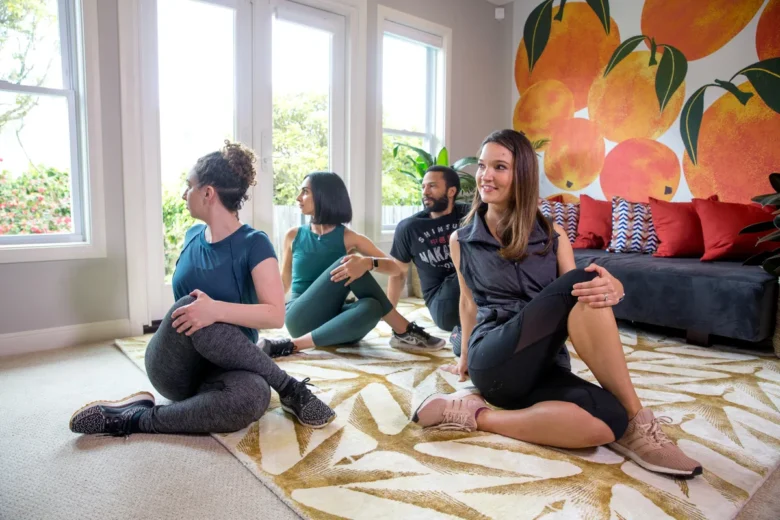We’ve all been there. Fired up with motivation, you buy new workout gear, sign up for a gym membership, and vow that this time, things will be different. For a week or two, you’re consistent. Then, life gets in the way, the novelty wears off, and your new sneakers start collecting dust. Before you know it, the only thing you’re exercising is your ability to make excuses.
The problem isn’t a lack of discipline. The real issue is that most of us approach fitness as a chore—another task to check off a long to-do list. We force ourselves into routines we don’t like, assuming that pain and boredom are just part of the deal. But what if it didn’t have to be that way?
Building a fitness routine you genuinely enjoy isn’t just possible; it’s the secret to long-term success. When you look forward to moving your body, exercise stops being a requirement and becomes a rewarding part of your life. This guide will walk you through how to create a sustainable fitness plan that feels less like work and more like play.
Understand Your “Why”
Before you even think about what exercises to do, take a moment to figure out why you want to get fit. Your motivation is the fuel that will keep you going when the initial excitement fades. Generic goals like “losing weight” or “getting healthy” are often too vague to be truly inspiring. You need to dig deeper.
Connect your fitness goals to your core values and what truly matters to you. Do you want more energy to keep up with your kids? Are you looking to build confidence for a new chapter in your life? Maybe you want to manage stress and improve your mental clarity to excel at work.
For example, instead of saying, “I want to run a 5k,” you could frame it as, “I want to feel the accomplishment of crossing a finish line and prove to myself I can do hard things.” When your “why” is personal and powerful, you’re much more likely to stick with your routine, even on days you don’t feel like it.
Find Activities You Genuinely Love
The most effective workout is the one you actually do. If the thought of spending an hour on a treadmill makes you want to hide, then don’t do it. The world of fitness is incredibly diverse, and there’s an activity out there for everyone. The key is to experiment and find what brings you joy.
Think outside the traditional gym box. Your fitness routine could include:
- Dancing: Sign up for a Zumba class, learn salsa, or just have a dance party in your living room.
- Hiking: Explore local trails and enjoy the mental health benefits of being in nature.
- Team Sports: Join a local soccer, basketball, or volleyball league for a dose of fun and friendly competition.
- Martial Arts: Try karate, judo, or kickboxing to build discipline, strength, and self-defense skills.
- Rock Climbing: Challenge your body and mind at an indoor climbing gym.
- Swimming: Enjoy a low-impact workout that’s easy on the joints.
Don’t be afraid to try something new. Take advantage of introductory offers at different studios and gyms. You might discover a passion for something you never expected.
Set Realistic and Kind Goals
One of the quickest ways to kill your motivation is to set unrealistic expectations. Going from zero workouts to seven intense sessions a week is a recipe for burnout and injury. Instead, start small and build momentum gradually.
Focus on consistency over intensity in the beginning. If you’re new to exercise, aim for three 20-minute sessions a week. Once that feels manageable, you can slowly increase the duration or frequency. This approach helps your body adapt and makes fitness feel like an achievable habit rather than an overwhelming commitment.
It’s also helpful to focus on performance-based goals rather than just appearance-based ones. Instead of fixating on the number on the scale, celebrate your ability to do five push-ups, run a full mile without stopping, or hold a plank for 30 seconds longer than last month. These wins are tangible and empowering.
Make it a Social Occasion
Working out doesn’t have to be a solo activity. Turning fitness into a social event can make it more fun and keep you accountable. When you know a friend is waiting for you, you’re much less likely to hit the snooze button.
Consider finding a workout buddy with similar goals. You can motivate each other, celebrate successes, and provide support when things get tough. You could also join a group fitness class, a running club, or a local sports team. The sense of community and shared purpose can be a powerful motivator. You’ll build friendships while you build strength.
Track Your Progress and Reward Yourself
Seeing how far you’ve come is incredibly motivating. Keep track of your progress in a way that works for you. This could be a dedicated fitness app, a simple notebook, or a calendar where you mark off your completed workouts. Note how you feel after each session—more energized, less stressed, or sleeping better. This helps reinforce the positive benefits of exercise.
When you hit a milestone, celebrate it! Rewards can be a great way to reinforce positive behavior. Just try to choose rewards that align with your health goals. Instead of indulging in a “cheat meal,” treat yourself to a new workout outfit, a relaxing massage, a new playlist, or a weekend trip you’ve been wanting to take.
Embrace Flexibility and Forgiveness
Life is unpredictable. There will be days when you’re sick, busy, or simply too exhausted to work out. It’s important to accept that missed workouts are a normal part of the process, not a sign of failure.
The all-or-nothing mindset is a trap. If you miss a planned workout, don’t throw in the towel for the rest of the week. Just get back on track with your next scheduled session. Be kind to yourself.
Also, be prepared to adapt your routine as your life changes. What worked for you a year ago might not be the best fit today. Listen to your body and be open to adjusting your activities, schedule, and goals as needed. A flexible routine is a sustainable one.
Frequently Asked Questions
How long does it take to form a fitness habit?
There’s no magic number, but research suggests it can take anywhere from 18 to 254 days for a new behavior to become automatic. The key is consistency. Focus on showing up, and before you know it, your routine will become a natural part of your day.
What if I have zero motivation to exercise?
Start with the “five-minute rule.” Commit to just five minutes of your chosen activity. If you want to stop after five minutes, you can. More often than not, once you start moving, you’ll find the energy to continue. The hardest part is often just getting started.
How do I find the time to exercise with a busy schedule?
Look for small pockets of time in your day. This could be a 15-minute walk during your lunch break, a quick bodyweight circuit before your morning shower, or stretching while you watch TV. Remember, even short bursts of activity, or “movement snacks,” add up and offer significant health benefits.
Your Fitness Journey Starts Now
Building a fitness routine you love is about discovery, patience, and self-compassion. It’s about shifting your mindset from “I have to work out” to “I get to move my body.” By finding your why, exploring activities you enjoy, setting achievable goals, and being flexible, you can create a sustainable practice that enriches your life.
Stop waiting for the perfect moment and start today. Your journey to a healthier, happier you is waiting.




